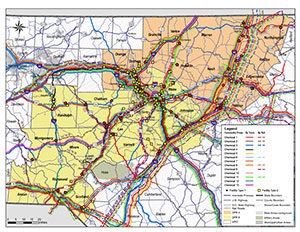What We Do
Commodities Flow Studies of Hazardous Materials
Since 2009, IEM has conducted numerous hazardous materials studies that document priority hazardous materials by motor carrier, rail, pipeline and barge. As a result, attendance at Local Emergency Planning Committee (LEPC) meetings has increased as much as 70% in some states.
Traditional Commodity Flow Surveys Don’t Provide a Complete Picture
Many LEPCs rely on traditional commodity flow surveys (CFS) which only provide a “snapshot” and do not include chemical origins and destinations, volumes, and frequencies. LEPCs need this actionable information in order to provide protective actions to evacuate or shelter in place during a chemical incident or release.
ChemFlow Composite

 IEM’s “Industry-Based” Commodity Flow Studies Produce Results
IEM’s “Industry-Based” Commodity Flow Studies Produce Results
Focusing on priority chemicals results in priority hazmat planning. The “industry approach” involves the industries that store, manufacture or transport chemicals. IEM obtains chemical volumes, routes and frequencies to provide LEPCs with a more complete picture of “what is traveling through their back yard.” This is information helps LEPCs meet EPRCRA planning requirements.
Commodity Flow Study Outcomes
- Improved planning, training, and preparedness for hazmat response teams
- Strong, trusting relationships between industry, regulatory agencies and local officials
- Realigned planning requirements to enhance response plans and public protective actions




